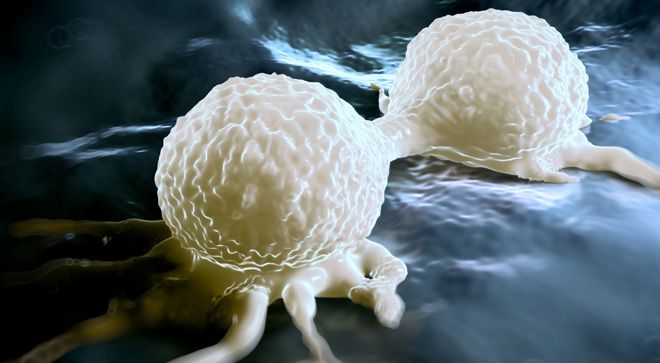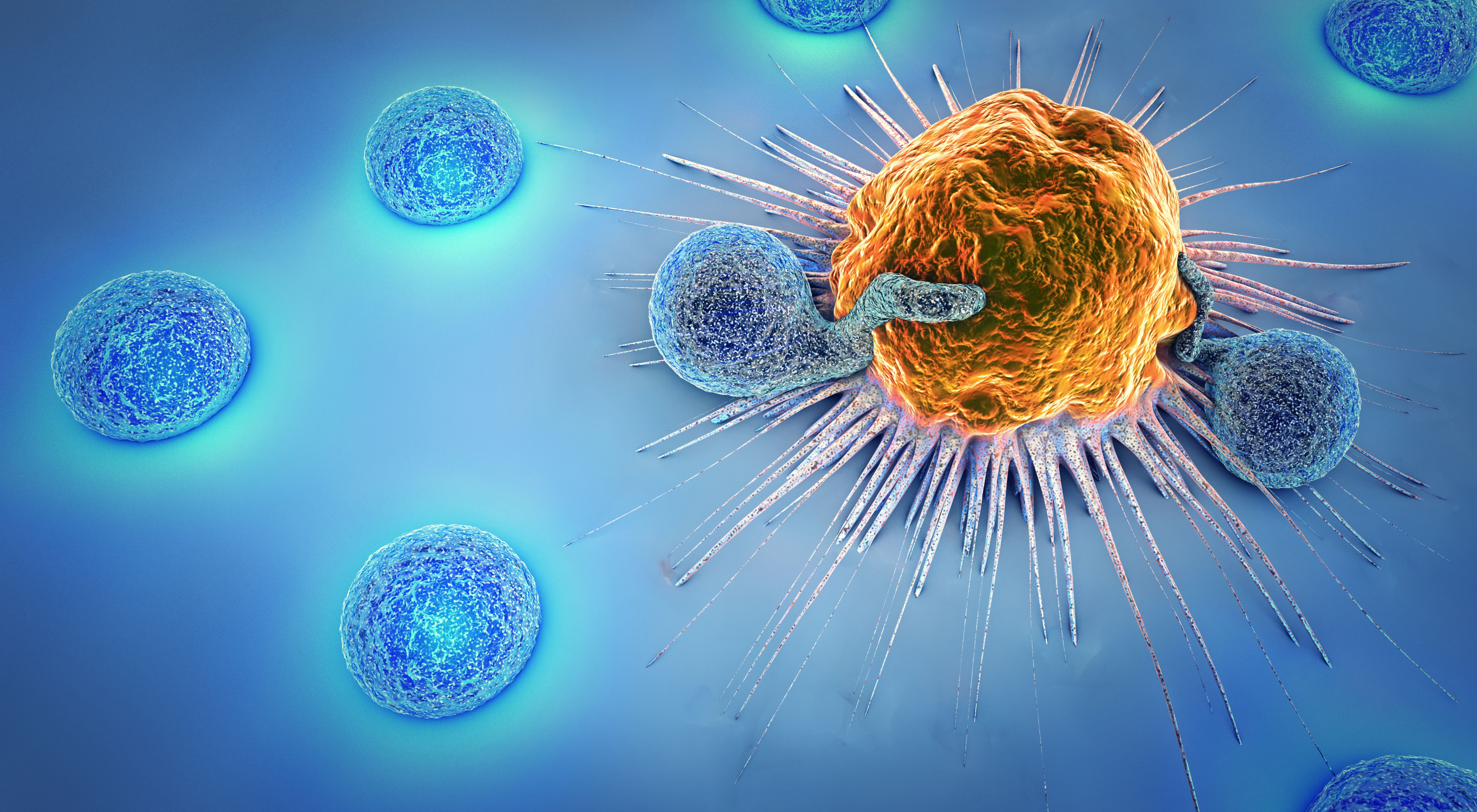Article
Chronic GVHD Treatment Improves, But Is Still Far From Perfect
Author(s):
Patients with blood cancer who underwent stem cell transplant and developed chronic graft-versus-host disease have more treatment options than ever before. But the formula for planning older and newer therapies has not yet been established.
Chronic graft-versus-host disease (cGHVD) is a complication that affects many patients with blood cancer who undergo stem cell transplantation. But now as researchers better understand the condition and how to treat it, outcomes continue to improve for this patient population, explained Dr. Daniel R. Couriel.
At the 2021 Society of Hematologic Oncology (SOHO) Annual Meeting, Couriel showed that there are options for patients with cGVHD through to the second line of therapy.
Upfront cGVHD Treatment
Therapies for primary treatment of cGVHD have an average objective response rate of 50% -- meaning that about half of patients respond to treatment – which are achieved over two to three years of treatment. After six months of treatment, research shows that more than 40% of patients are still alive, on lower doses of steroids and do not require additional steroid of cGVHD therapy. This status of treatment in the field has come long way since the studies of historical agents, Couriel explained.
Multiple studies of historic agents used for the frontline treatment of cGVHD failed to show a survival benefit. Instead, these studies demonstrated decreased survival, limited benefit, unacceptable toxicity or no benefit at all.
The most recent study highlighted during Couriel‘s presentation was the phase 3 BMT CTN 0801 clinical trial of Rapamune (sirolimus) plus prednisone with or without a calcineurin inhibitor. In 138 evaluable patients, the study showed that failure-free survival and overall survival were similar, regardless of inclusion of a calcineurin inhibitor. There was all no difference in response rate between the two treatment arms, leading investigators of the study to conclude that the results were insufficient to warrant a randomized controlled trial, and the study was terminated early.
According to Couriel, BMT CTN 0801 and other studies of frontline treatment for cGVHD are no longer relevant because the agents are not widely used in the space. Further, if effective primary treatment does not bring patients into remission, there is opportunity to treat these patients in later-line settings.
When Disease Does Not Respond to Steroids
Everyday treatment of steroid-refractory cGVHD can include off-label use of agents that are not FDA approved for the treatment of this patient population. This is because after failure on corticosteroids, agents like Rituxan (rituximab), mycophenolate mofetil, sirolimus and others have shown the ability to induce high response rates in retrospective and prospective studies.
“Traditionally, we've used for these treatments for steroid-refractory chronic GVHD. These modalities are not FDA approved, but we're still using the. For instance, in my case, especially Rituxan, and then the list continues with mTOR inhibitors, specifically sirolimus, more than Afinitor (everolimus) in the case of our patients. The overall response rate is around 60% to 70%, with the exception of modalities that seem to be on the lower end of the range, like imatinib,” Couriel stated during his presentation at the meeting.
The challenge with these agents, according to Couriel, is that the study results are difficult to understand because the study designs are not always curated in a way that can translate to clinical practice. Further, oncologists select treatment based on experience, ease of use, need for monitoring and risk of side effects.
Treatment with rituximab is FDA approved for the treatment of steroid-refractory acute GVHD and was considered a potential option for steroid-refractory cGVHD following results from a phase1/2 study. In the study, 21 patients received 38 cycles of Rituxan and the objective response rate achieved was 70%. Responses included two complete responses.
In terms of side effects, the treatment was well-tolerated. There were nine serious, grade 3/4 side effects observed. Side effects included infectious toxicity like hepatitis B reactivation in one patient and septic arthritis (an infection in the joint fluid and tissue) in a clinically uninvolved hip joint in one patient, infectious diarrhea in three patients and viral conjunctivitis in 1 patient. Non-infectious side effects included gastrointestinal hemorrhage, kidney stones with acute renal colic in and acute infusion reaction to Rituxan in one patient each.
One agent is now making progress with the FDA for the potential treatment of steroid-refractory cGVHD; Jakafi (ruxolitinib). A new drug application for the agent was granted priority review by the FDA in February 2021 based on data from the phase 3 REACH-3 clinical trial. Jakafi led to a higher response rate of 49.7% compared with 25.6% in the best available therapy arm and showed a trend toward improvement in FFS. The FDA plans to make a decision on the potential approval at the end of September 2021.
Further progress in the armamentarium of cGVHD has been shown with second-line therapies, explained Couriel.
Second-line Treatment
Based on findings from a multicenter, open-label, phase 2, Imbruvica (ibrutinib) was granted FDA approval for the treatment cGVHD after failure of first-line corticosteroid therapy and requiring additional therapy in 2017.
Regarding the study, Couriel said: “It was well designed and included steroid refractory chronic GVHD patients, and the primary endpoint was response using the chronic GVHD response criteria. There was a documented 60 something response rate. This was in 28 patients, nine of whom had complete remission, and seven patients had stable disease.”
Of the 42 patients envaulted on oral ibrutinib 420 mg once daily, the 67% responded to therapy. Notably, 88% of the patient population had two organs involved at baseline. Responses were observed in all involved areas, which included the mouth, skin, gastrointestinal tract, and liver. The median time to response was 12.3 weeks.
More than 20% of patients in the study experienced AEs. The most common side effect observed with second-line Imbruvica in patients with cGVHD included fatigue, bruising, diarrhea, thrombocytopenia, stomatitis, muscle spasms, nausea, hemorrhage, anemia and pneumonia.
Since, 2017, 1 additional therapy was granted FDA approval for the second-line treatment f cGVHD which is Rezurock (belumosudil) for the treatment of adult and pediatric patients 12 years and older with cGVHD after failure of at least two prior lines of systemic therapy.
Approval was granted based on results from the ROCKstar study during which the ORR was assessed as the primary end point, and the key secondary end points evaluated were duration of response, change in Lee Symptom Scale Score, OS, FFS and change in GVHD severity.
ROCKstar showed a 75% ORR with belumosudil. Response included CRs in 6% of patients and partial responses in 69%. The treatment was also determined to be well-tolerate and consistent with prior reports of the agent in patients with cGVHD.
Now that the treatment landscape for cGVHD appears to be well-populating with treatment options, Couriel explains that questions about sequencing linger.
“We still need to establish a more or less standard algorithm in terms of how we position them in in the middle of the traditional therapies. And the treatment choices are still based on physician experience, ease of use need for monitoring, risk of toxicity, and now with new agents’ cost. FDA-approved agents are 2 factors that I would include in the equation,” Couriel stated.
In the pipeline for cGVHD, JAK-1/JAK2 inhibition is very promising, Couriel stated, and oncologists await the FDA decision on whether to approve ruxolitinib for cGVHD indications.
For more news on cancer updates, research and education, don’t forget to subscribe to CURE®’s newsletters here.




